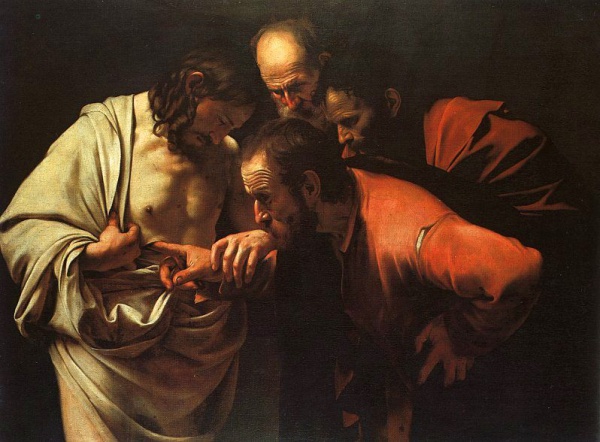Facts About The Incredulity of Saint Thomas
"The Incredulity of Saint Thomas" is a captivating painting by the renowned Italian Baroque artist Caravaggio, created circa 1601-1602. This masterpiece is housed in the Sanssouci Picture Gallery in Potsdam, Germany. It vividly captures the biblical narrative of Doubting Thomas, who refused to believe in the resurrection of Jesus until he could touch His wounds. The painting powerfully portrays Thomas's astonishment as Jesus gently guides his hand to touch the wound, emphasizing the tangible reality of the risen Christ. Notably, Caravaggio forgoes the inclusion of a halo and employs his signature chiaroscuro technique, which dramatically contrasts light and dark.
Interestingly, this painting is thought to be linked to some of Caravaggio's other works, such as "Saint Matthew and the Angel" and "The Sacrifice of Isaac" possibly sharing the same model. Originally, the painting was owned by Vincenzo Giustiniani and survived the turmoil of World War II, eventually becoming part of the Prussian royal collection.
Excitingly, a second version of the painting was discovered in a private collection in Trieste, Italy. Experts such as Maurizio Marini and Denis Mahon have confirmed its authenticity, with a court in Trieste validating their findings. Recognized for its historical and artistic significance, the painting is also acknowledged by the Ministero per i Beni e le Attività Culturali Sopraintendenza Regionale del Friuli-Venezia Giulia.

 Czech Republic
Czech Republic